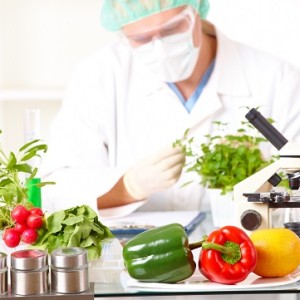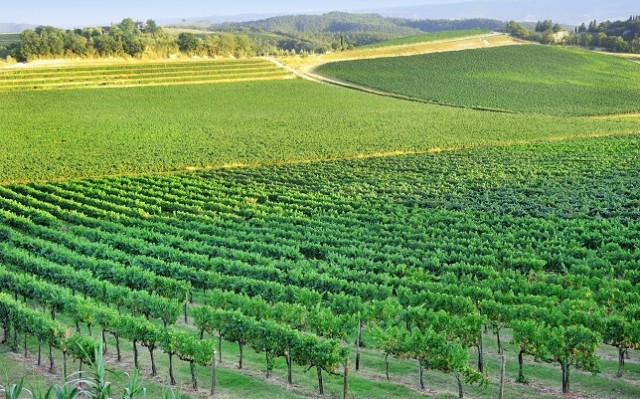
Biotechnology is a growing industry, a relatively new science that is expected to grow in importance over the coming decades as we find new ways to improve food yield, modify vital crops for hardiness and protection against disease and extreme weather, and to grow in some of the most remote areas on the planet. Typically, a researcher entering the biotech field will have a degree in plant biology, botany, biomedical engineering or other related science. In the last few years, some of the most prestigious universities in North America and throughout the world have custom-designed specific post-graduate programs in biotechnology. Learn more about biotechnology degrees. Graduates with a BS can typically get field research work with pharmaceutical or other medical companies, but if they wish to engage in lab research and manage their own projects, as with most other science programs a MS is desirable and a PhD preferable - especially if wishing to teach and research in a university department.
Congress defined biotechnology as “any technique that uses living organisms or their products to make or modify a product, to improve plants or animals, or to develop microorganisms for specific uses.” (1). It is the modification of any biological system for human use (2) to include food, fiber, fuel and construction material.
To some, it is a controversial subject because we are not asking enough questions about how it will affect our health -accusations of profiteering and poor ethics are regularly levelled against some of the globe's largest biotech companies; critics point out that we should not be messing with nature. To others, it is a godsend that will solve some of the fundamental issues facing the world today that will only get worse in the future. It is claimed biotech will end world hunger and make delicate crops hardier in marginal landscapes. Advocates point out that we have been doing it for 10,000 since the very birth of agriculture and modern biotech is only an extension of this.
A Brief History of Biotech
In a previous article, we demonstrated that the birth of agriculture took place some 10,000 years ago - spreading out from the Indus Valley, east towards China, and west into Europe. It eventually crossed into North America and Africa and we see evidence all over the world now, showing us how it spread throughout human civilisation through the Neolithic (1). Firstly, by selecting and storing seeds from crops with the most desirable attributes, it soon developed into selective cross-breeding for greater yield, durability and to improve the range of soils in which they could grow (3). We could also describe as biotech, the process developed later of using yeast to create alcohol such as beer and wine after people observed the fermentation process in nature (4). Any artificial modification of the natural world for the purpose of human enterprise is biotechnology.
Modern biotech as we understand it today began in the 19th century with the scientific leaps and bounds in the Theory of Evolution, in the discovery of the gene and with the development of bacteriology and virology, but the term was not coined until just after World War I (1). From there, it was a veritable explosion as humans started to exploit the natural world like never before. New cultivars of our most popular crops were developed through crossbreeding, just as it had during the Neolithic Revolution - for yield and hardiness to cope with a booming population. The luxuries brought from abroad in the colonial and post-colonial period allowed first the well-to-do and then the common people greater access to exotic foodstuffs. Great advances were made during the First Word War with the development of corn starch for the purpose of manufacturing explosives (5). Just a few decades later during World War II, penicillin and other antibiotics were developed that took medical science into a golden age; just after the war, human civilisation began intensive farming and many new cultivars of existing food crops were developed, once again pushing the boundaries of yield and hardiness.
It is said that nothing drives technology like war (or the prospect of war) and during the Cold War, this was certainly true. The first half of the 20th century was dominated by the development of biological weapons for example, alongside nuclear technology. With the discovery of DNA's structure at the beginning the 1950s, modern biotechnology was born (1).
Fields of Use
Since the 1960s, biotechnology has grown to become one of the most important emerging sciences. It has many uses, contributing to improving human life and our way of life in many ways.
Medical Uses
The golden age of biotech for medical purposes is arguably with the birth of the vaccine (2). Crude though it was, Edward Jenner identified that cowpox provided immunity to smallpox and so he experimented in using discharge from a cowpox pustule as a vaccine, though there is some evidence from the Middle and Far East of for evidence of societies having done just this for hundreds of years (7). But it is Jenner that is credited with the success of modern vaccination, something that eventually led to the eradication of smallpox. The next development was Louis Pasteur's rabies vaccine. These two men are largely credited for the birth of immunology, and biotech - manipulation of organic material - was fundamental in developing their vaccines.
Other medical uses include (8):
- Pharmacology and the development of new drugs through chemical synthesis; we are now able to do this as we can get down to the genetic level
- Genetic manipulation of bacteria and other organic material for the purpose of developing new vaccines against new threats and the resistance of diseases against older treatments
- Gene and cell therapies for the detection of inherited and other genetic conditions
Agricultural Uses
As with the dawn of agriculture, humanity has always sought ways to improve the yield, hardiness and other attributes of our core crops (2) and to improve yields and longevity of our livestock. For the most part, this has been trial and error - relying on random cross-breeding and not always getting the desired attributes. From the standpoint of a lab technician, it is more efficient to select specific genes and modify crops directly with the most desirable gene containing the attribute they are looking to apply instead of applying the changes in the field and ending up with some unexpected and undesirable traits. Desirable traits are not just about yield and hardiness, and today there are other factors as we seek to combat climate change which is altering and providing us with new problems, we have found the need to protect our crops against the following (8):
- Examining and promoting genes that allow crops to develop greater resistance to pests and diseases
- To survive extreme weather conditions such as frost, flooding and drought as the planet experiences more extreme weather more frequently
- For less fragility in different soil pH levels. Some prefer more alkaline soils while others thrive in acidic soils; different crops also require different quantities of water and soil nutrients
Industry and Commerce
Plants and organic material do not only supply food for our tables. Paper comes from wood pulp (trees), our clothes are made of wool (from sheep) and cotton (a plant) (2). We utilise enzymes in our detergents, hemp for reusable shopping bags. Few have evolved naturally and most have been bioengineered for centuries for more desirable attributes to provide us with the essential non-food items we use in our daily lives.
One of the most recent developments in biotechnology is the use of certain crops and grasses for biofuel (6). These are renewable fuels where oil and gas are not (because they are crops), though not ideal, they are a stepping stone as we look to move away from fossil fuels and develop the cleaner, greener technologies of the future. We have presently developed 49 crops for biofuels and most are bioengineered crossbreeds (9).
Pollution is another major issue that environmental engineers have had to deal with; we know just how harmful toxic spills can be and most clean-up operations use bio-engineered bacteria and other organic life designed to “eat” the material and secrete harmless gasses (10).
GM Crops
Put simply, a GM crop is a plant that has been modified beyond the natural genetic makeup into which it has evolved. The most common terms used are GM, which means “Genetically Modified” and GMO which means “Genetically Modified Organism”. As noted above, humans have been genetically modifying crops for some 10,000 years - using selective cross-breeding. Using this definition, most of the staple crops we use have been genetically modified but critics have expressed concern about moving this process from the field and into a lab (17). Advocates say the process is no different. What are the core arguments for and against GM crops?
The Case For GM Crops
For at least 20 years, the UN has had in place safeguards and methods of monitoring potential harm caused by biotech (11) that could affect our health or the environment. The same report from 1992 also recognised the importance of developing good biotech practices in coping with the growing demands of the human population in the light of climate change, and to tackle world poverty and hunger - something that advocates of biotech such as GM say we are already achieving (12), even if the battle is far from over. The amount of space given over the GM crops has increased dramatically with no environmental damage recorded in this usage.
A large percentage of the world's population lives in what are called “marginal landscapes”. This means areas of land where either access to water or soil nutrients is lower than in prime agricultural land; on a side note, some of this land may be ideal for biofuel (13). Farmers produce much lower yields on marginal lands, which are much more susceptible to sudden environmental change. Flooding or drought is not just an inconvenience - it is a danger to human life. Biotechnology has the potential to develop crops far more resistant to disease, requiring less nutrients from the ground and able to survive harsh conditions. In future, biotech researchers also hope to improve the nutritional quality of these foods - increase calorific yield rather than crop volume yield, potentially meaning we will need to grow less which will also lead to less take up of land.
GM crops will not only provide greater yields in developing countries, the same technology will also provide the west with greater food and fibre security. Insect pests can devastate a crop, putting farmers out of businesses and damaging the local economy. In some cases where a crop has been modified (12), crops have been saved from destruction.
The biggest conundrum for anti GM activists is the use of chemical pesticides that they say is damaging crops, wildlife and the environment. Developing genetic resistance to pests and disease, it is quite a reasonable assumption to make that altering these crops for that purpose would reduce the amount of pesticides that farmers presently use (13).
The Case Against GM Crops
There are a number of issues that anti GM activists raise for why they feel the technology is not beneficial (15). They are concerned that the development of GM crops will put many people out of work, especially in the developing world; the flip side of this argument is that food will get cheaper If the major cost of production - labour - is drastically reduced.
One of the scientific questions raised is what will happen if certain pest or disease resistant genes got into the wild. It is certainly feasible that we could create a new strain of weeds that have been kept in check simply because they have not been utilised by humans, but critics of this stance say that hybridisation has always been a problem since the dawn of agriculture and even before that. Cross-pollination is how we have come to create some of our staple crops in the first place (16). In a similar way, they have expressed concerns about the potential for mutation - once again, this has always been a possibility.
There are concerns about accidental release, possible leading to disease or allergens in the human population. This was an issue explored when GM maize used as animal feed accidentally found its way into the human food chain. Though those people who consumed it experienced no adverse effects, critics point to the possibility of health problems (15; 16). Antibiotic resistance, new strains of disease and mutation have all been cited by critics for reasons why more studies are needed.
With the science clear and the world's major scientific institutes having endorsed GM, the only real argument that the anti GM movement has on its side is one of ethics - whether companies should be permitted to patent a gene or an organism, treating it as a product rather than life. Questions of ethics and how the social changes of GM technology will affect people, is a separate issue from the science.
Sources
- http://www.public.asu.edu/~langland/biotech-intro.html
- http://dash.harvard.edu/bitstream/handle/1/12211496/S0959774300001815a%202.pdf?sequence=2
- http://books.google.co.uk/books?id=9GY5DCr6LD4C&redir_esc=y
- https://www.historyofvaccines.org/multilanguage/timeline
- http://www.scientificamerican.com/article/49-plants-that-could-make-biofuel-less-troublesome/
- http://www.acs.org/content/acs/en/careers/college-to-career/chemistry-careers/biotechnology.html
- http://www.cbd.int/doc/legal/cbd-en.pdf
- https://academic.oup.com/plphys/article/124/2/487/6098810
- http://www.sciencedirect.com/science/article/pii/S0264837714002191
- http://www.agbioworld.org/biotech-info/articles/biotech-art/in_favor.html
- http://www.fao.org/english/newsroom/focus/2003/gmo8.htm
- http://geneticliteracyproject.org/2014/10/29/challenging-tired-arguments-against-gmos/
- https://www.nature.com/scitable/topicpage/genetically-modified-organisms-gmos-transgenic-crops-and-732/
- Guide to Parasitology - November 19, 2018
- Deserts as Ecosystems and Why They Need Protecting - November 19, 2018
- Conservation: History and Future - September 14, 2018






